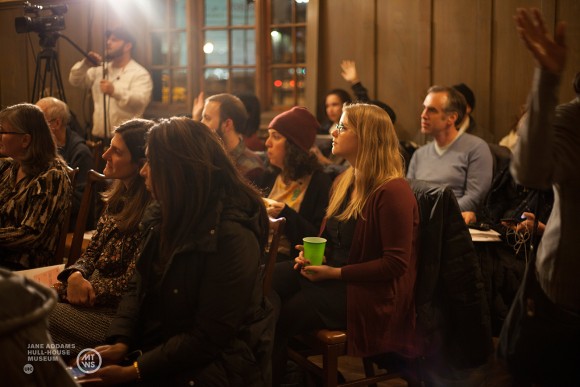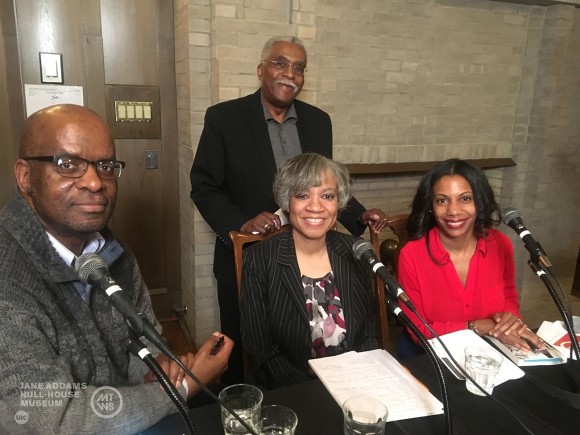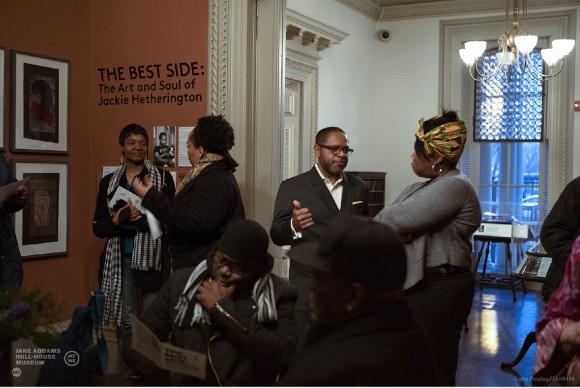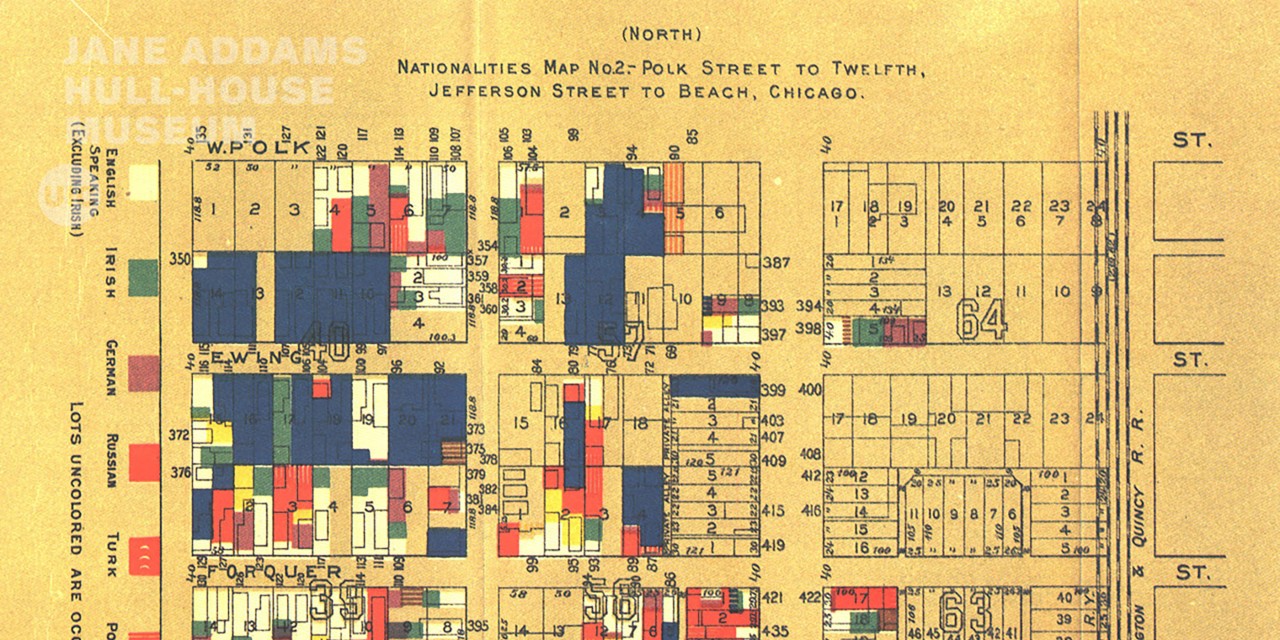Making the West Side uses local history to facilitate conversations about neighborhood change on Chicago’s West Side. Led by Jennifer Scott at the University of Illinois at Chicago’s Jane Addams Hull-House Museum, the project brings diverse neighborhood stakeholders together to explore the past, present, and future of this changing—but sometimes overlooked—part of Chicago.

Jane Addams Hull-House Museum is an ideal venue for this important conversation. It occupies two of the original historic Hull-House Settlement buildings. The Hull-House Settlement was founded in 1889 by social reformers Jane Addams and Ellen Gates Starr. It served as the headquarters of a community of primarily women who lived and worked together to create educational, social, and cultural opportunity for the neighborhood’s predominantly low-income immigrant population. “Hull-House was once a powerful neighborhood force that transformed the surrounding community and sparked a national movement,” Scott says.
The Hull-House Settlement was closed in 1963, when the campus of the University of Illinois at Chicago on which the museum stands expanded into a downtown location on the Near West Side as a part of “urban renewal” in Chicago. Development on and around the campus, including new expressways and the destruction of public housing, profoundly changed neighborhood life. “These changes displaced a number of communities,” Scott says—leveling once vibrant areas and designating them as “blight.” Repercussions are still felt today.
Through a variety of programs, Making the West Side explores the first and final decades of Hull-House Settlement and facilitates conversations about neighborhood change among residents, activists, and scholars. Programs range from days during which adult and youth community members share memories, images and objects in storytelling, oral history and mapping sessions, to public forums featuring historians, journalists, and public policy and social services professionals engaged in active audience participation.
“History gives people a longer view of social patterns and policies that have impacted their neighborhoods,” Scott observes. “It becomes a useful tool in helping people to explore the systematic and root causes of contemporary social issues. Learning about the development of neighborhoods and the histories of urban planning and its missteps helps to inform residents’ of their current options and strategies for change.”
Partnerships—central to Making the West Side’s programming—were developed through monthly meetings with a range of cultural institutions and social services organizations across the West Side.
“The monthly meetings became mini-community conversations, where partners were introduced to one another and to different West Side neighborhoods,” Scott explains. “In these meetings, they talked about issues that were of major concern in their neighborhoods: displacement and disinvestment, the history and resurgence of racist housing policies, and equitable access to public health, employment and education.”
West Side/South Side: Bridging the Divide
One especially memorable panel conversation focused on divisions between Chicago’s South and West Sides. “For decades, the two predominantly black areas often have been separated by politics, culture, history, and convention,” the event website notes—inviting people for a “lively conversation” to “assess this divide and find ways to bridge it.” The moderated panel featured two West Siders and two South Siders, including South Side journalist Natalie Moore.

The panel discussion explored issues that both divide and unite South and West Side communities. Scott notes that participants ultimately agreed in this session that they want to coalesce around shared concerns. Moore dedicated her column in the Chicago Sun-Times to the conversation. “We have more in common than we think — economic devastation, city neglect, disinvestment, and battles over real estate through the decades,” Moore writes.
But as a Chicagoan from the South Side and a journalist, she concedes that she and other residents have been complicit. In “I Want To Hear Chicago’s West Side Stories,” she calls on Chicagoans to “do better”:
“One of the toxic effects of segregation in our region is the inability to experience other neighborhoods and as a result falling back on stereotypes... As the borders of the West Side fade into the ever-encroaching West Loop, the stories and history of West Siders are at risk of being erased and forgotten.”
Building on this program, Making the West Side organized follow up programming focusing on working together around school closures: a pressing issue with which the West and South Sides struggle.


The Making the West Side program is ongoing at Jane Addams Hull-House Museum. In addition to monthly conversations, Hull-House launched two concurrent exhibitions that focus on the West Side: Claiming Space: Creative Grounds and Freedom Summer School—a collaborative exhibition with artists, educators and students that explores the “transformation of public school space amidst the backdrop of depopulation, divestment and school closures on Chicago’s West Side”; and The Best Side: The Art and Soul of Jackie Hetherington—an exhibition that features works of a local, West Side artist who co-founded Art and Soul on the West Side, a unique neighborhood center, just seven months after the 1968 uprising.
For more information on Making the West Side, please visit the Jane Addams Hull-House Museum website.
